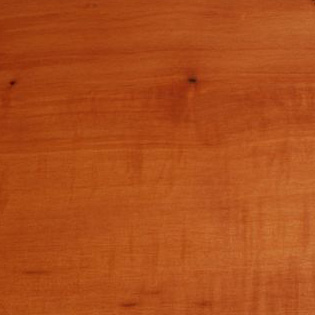 European Pear, steamed |
Names and distribution: The European pear (Pyrus communis) belongs to the rose family and is related to cherry and apple. Mainly grown for its fruit, the wood incurs almost as agricultural by-product. The species is comparatively rare and sought after. Visually almost identical to steamed pear is the service tree = Swiss pear tree (Sorbus torminalis).
Appearance: Sapwood and heartwood of equally bright yellowish-white to reddish-brown color, darkening on exposure to light; dampened with warm bright to dark red colors. In case of false core also with darker, reddish-brown to black-brown color core. Pored without conspicuous wavy grain or structure. Decorative.
Properties: Density at u = 12% is 0.75 t / m3. The shrinkage from fresh state to u = 12% is specified as 8.5% tangentially and 4.8% radially. Strongly shrinking with stronger tendency to crack and warp, but with good stamina after drying. Good and clean to handle, good to profile and turn. Uniformly smooth surfaces yielding, easy to polish and stain. The Brinell hardness is given as 25, the modulus of elasticity as 11,700 N/mm2. Pear wood is not permanent by nature.
Use: Wood for turnery and carving, small furniture, unique furniture, handles for knives, woodwinds (recorders), parquet.
| References: |
GOTTWALD 1970: Holzbestimmung der wichtigsten Handelshölzer ARGE Holz 1998: Einheimische Nutzhölzer und ihre Verwendung |
Note: according to the latest findings, but without any warranty





